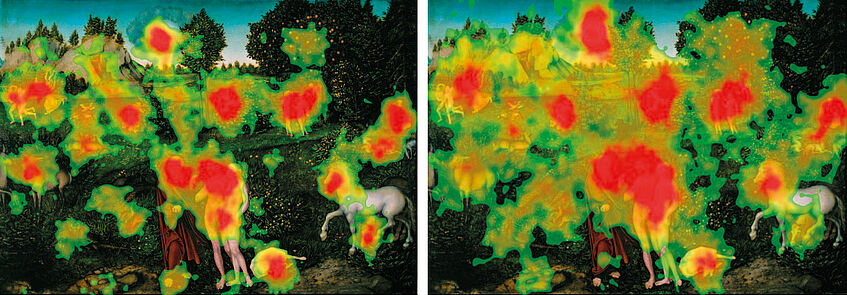The Cultural Eye / The Gendered Eye
Principal Investigator: Univ.-Prof. Dr. Raphael Rosenberg
Team: Hanna Brinkmann, Anna Miscenà, Jozsef Arato, Vanessa Frentzen, Zoya Dare
Former Team Members: Mag. Mario Tadzio Thalwitzer
Project Dates: 2013-2017, 2019-2020
Funding Agency: FWF. Der Wissenschaftsfond, FWF Stand Alone Project (P25821)
Cooperation Partners: Univ.-Prof. Dipl.-Psych. Dr. Helmut Leder, Kunsthistorisches Museum Wien
Since the late 19th century, art historians like Moritz von Thausing and Heinrich Wölfflin have been discussing group-specific differences in art viewing, especially those based on historical, geographical, later also social and gender commonalities. More recently attempts were made to postulate culturally determined visual modalities (Michael Baxandall’s “period eye”). However, all those attempts were only based on the analysis of artifacts and written sources, and hence remained hypothetical.
The project aims at exploring group-specific similarities/differences among art viewers experimentally on the level of eye movements by using eye-tracking technology. The central elements are comparative studies of Japanese and Austrian as well as male and female art viewers. Our hypothesis predicts an impact on art perception of diverse cultural socialization and gender. By analyzing cultural and gender differences within contemporary spectators we hope to identify the levels and factors of possible historical variances of art perception. The project includes studies conducted in eye-tracking-laboratories as well as in a genuine museum context (cooperation partner: Kunsthistorisches Museum Wien).
Over the course of the museum study, a newly developed eye-tracking system was tested, which should have allowed for a calibration-free, unobtrusive method to record the eye movements of museum visitors. Unfortunately, the measurements of this prototype were not as precise as we had expected. This caused some delay in the project. However, the study was one of the first eye tracking experiments conducted at an art museum with real visitors and was an important step towards establishing a methodology for eye movement research in this context.
The project is conducted at the CReA Lab (principal investigator: Raphael Rosenberg) and deepens our collaboration with the EVA Lab at the Department for Basic Psychological Research of the University of Vienna (cooperation partner: Helmut Leder).

